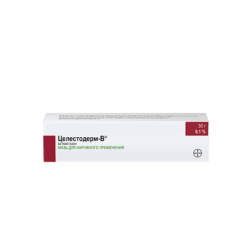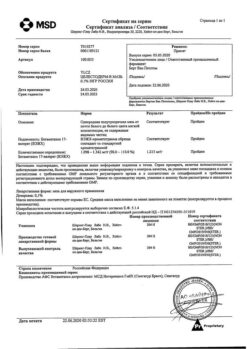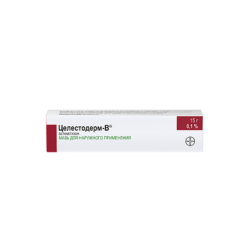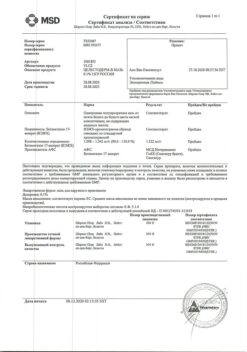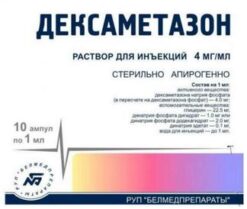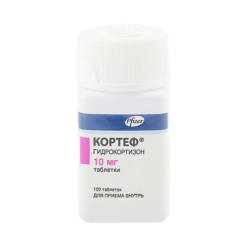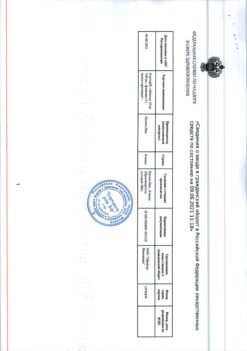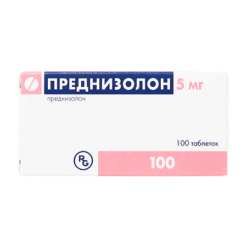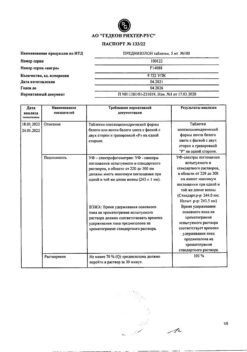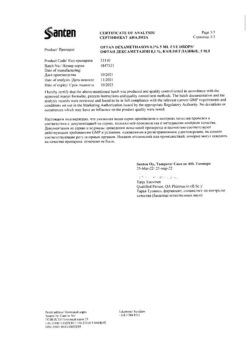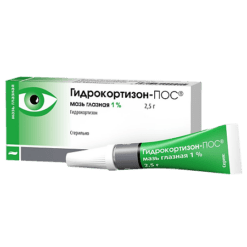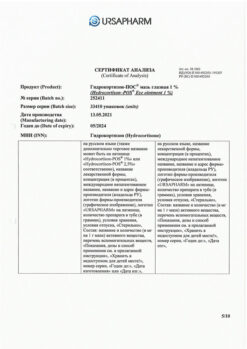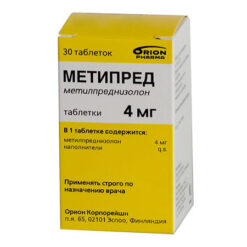No products in the cart.
Dupixent, 150 mg/ml 2 ml syringes 2 pcs
€1.00
Out of stock
(E-mail when Stock is available)
EAN: 3664798014600
SKU: 492795
Categories: Bronchial asthma, Corticosteroid hormones, Medicine, Pain and fever
Description
- Atopic dermatitis of moderate to severe course in adult patients with insufficient response to therapy with topical drugs or when such drugs are not recommended for use.
The drug Dupixent® can be used in monotherapy or simultaneously with topical drugs. - Additional maintenance therapy for moderate to severe bronchial asthma in patients aged 12 years and older with an eosinophilic phenotype or in patients with hormone-dependent bronchial asthma receiving oral glucocorticosteroids.
Indications
Indications
Moderate to severe atopic dermatitis in adult patients with insufficient response to therapy with topical medications or when such drugs are not recommended for use.
Dupixent® can be used in monotherapy or simultaneously with topical medications.
As an additional maintenance therapy for moderate to severe bronchial asthma in patients aged 12 years and older with an eosinophilic phenotype or in patients with hormonal-dependent bronchial asthma receiving oral glucocorticosteroids.
Pharmacological effect
Pharmacological effect
Pharmacotherapeutic group: interleukin inhibitors.
ATX code: D11AH05.
Special instructions
Special instructions
Hypersensitivity
If a systemic hypersensitivity reaction occurs, treatment with Dupixent should be stopped immediately and appropriate therapy initiated. In clinical studies using Dupixent for atopic dermatitis, one case of a serum sickness-like reaction and one case of serum sickness after administration of the drug were reported (both adverse reactions were considered serious). In a study using the drug for bronchial asthma, one case of anaphylaxis was reported after administration of Dupixent®.
Conjunctivitis
Conjunctivitis was more common in patients with atopic dermatitis receiving Dupixent®. Most patients with conjunctivitis recovered or recovered during the treatment period. Among patients with bronchial asthma, the incidence of conjunctivitis was low and similar in the groups receiving Dupixent® and placebo. Patients should report the first onset or worsening of eye symptoms to their healthcare provider.
Eosinophilic conditions
Patients with asthma may develop severe systemic eosinophilia, sometimes with clinical signs of eosinophilic pneumonia or vasculitis consistent with eosinophilic granulomatosis with polyangiitis, which are often treated with systemic corticosteroids. These events can usually, but not always, be associated with a reduction in oral corticosteroids. Clinicians should be alert for vasculitic rash, worsening pulmonary symptoms, cardiac complications, and/or neuropathy occurring in their patients with eosinophilia. Cases of eosinophilic pneumonia and vasculitis consistent with eosinophilic granulomatosis with polyangiitis have been reported with the use of Dupixent in adult patients who participated in a clinical trial of the drug for bronchial asthma. A relationship between the use of Dupixent® and these conditions has not been established.
Symptoms of asthma exacerbation or worsening condition
Dupixent® should not be used to treat symptoms of acute worsening or exacerbation of asthma. Dupixent® is not used to treat acute bronchospasm or status asthmaticus.
Reducing the dose of glucocorticosteroids
The use of systemic, local or inhaled corticosteroids should not be abruptly interrupted after starting therapy with Dupixent®. Reduction of the dose of glucocorticosteroids, if necessary, should be gradual and should be carried out under the direct supervision of a physician. A reduction in the dose of glucocorticosteroids may be accompanied by systemic withdrawal symptoms and/or the manifestation of conditions that were not previously apparent due to systemic glucocorticosteroid therapy.
Helminthiases (helminthic infestations)
Patients with detected helminthiasis were not included in clinical studies. It is not known whether Dupixent® can affect the immune response to helminthiasis. Patients with existing helminthiasis must be treated before starting treatment with Dupixent®. If during treatment with Dupixent® the patient becomes infected with helminthiasis, and anthelmintic drugs are ineffective, treatment with Dupixent® should be discontinued until the parasitic disease is cured.
Concomitant atopic diseases
Patients with atopic dermatitis and concomitant bronchial asthma should be advised not to change their treatment without consulting their doctor. When stopping treatment with Dupixent®, possible effects on the course of other atopic diseases should be taken into account.
Impact on the ability to drive vehicles and machinery
The drug Dupixent® has no or negligible effect on the ability to drive vehicles and operate other machinery.
Active ingredient
Active ingredient
Dupilumab
Composition
Composition
1 ml of solution contains:
Active ingredients:
dupilumab – 150 mg,
Excipients: L-histidine and L-histidine hydrochloride monohydrate – 3.1 mg, L-arginine hydrochloride – 10.51 mg, sodium acetate trihydrate and glacial acetic acid – 0.75 mg, sucrose – 49.88 mg, polysorbate 80 – 2 mg, water for injection – up to 1 ml.
Pregnancy
Pregnancy
Pregnancy
There are only limited data on the use of dupilumab in pregnant women. In animal studies, no direct or indirect adverse effects regarding reproductive toxicity were detected. Dupixent® can be used during pregnancy only if the expected benefit to the mother outweighs the potential risk to the fetus.
Breastfeeding period
It is unknown whether dupilumab is excreted into human breast milk. Taking into account the benefits of breastfeeding for the child and the benefits of continued use of the drug for the mother, a decision should be made to stop breastfeeding or discontinue Dupixent® during the breastfeeding period.
Contraindications
Contraindications
Hypersensitivity to dupilumab or any of the excipients of the drug (see section “Special Instructions”).
Children under 18 years of age in patients with moderate to severe atopic dermatitis due to unknown efficacy and safety.
Children under 12 years of age in patients with moderate to severe bronchial asthma due to unknown efficacy and safety.
With caution
Side Effects
Side Effects
Atopic dermatitis
To describe the frequency of occurrence of adverse reactions, the following classification is used: very often ≥10%; often ≥1% and <10%; uncommon ≥0.1% and <1%; rarely ≥0.01% and <0.1%; very rare <0.01%; frequency unknown (it is impossible to determine the frequency of occurrence of an adverse reaction from the available data).
Table 1. Adverse reactions observed in clinical studies in patients with atopic dermatitisa
System-organ class
Frequency
Adverse reactions
Infectious and parasitic diseases
Often
Conjunctivitis (4.0%)
Oral herpes (3.8%)
Bacterial conjunctivitis (1.9%)
Herpes simplexb (1.7%)
Blood and lymphatic system disorders
Often
Eosinophilia (1.7%)
Visual disorders
Often
Allergic conjunctivitis (7.0%)
Itchy eyes (2.9%)
Blepharitis (4.5%)
Dry eye syndrome (1.8%)
General disorders and disorders at the injection site
Very often
Injection site reactions (15.9%)
a Pooled data from placebo-controlled monotherapy clinical trials (SOLO 1, SOLO 2 and phase 2 dose-finding studies) and the placebo-controlled CHRONOS study with concomitant use of topical corticosteroids for the treatment of atopic dermatitis: patients received the drug at a dose of 300 mg once every 2 weeks and 300 mg once a week with or without topical corticosteroids for 16 weeks.
b In clinical studies, cases of herpetic infections (Herpes simplex) involved skin and mucous membrane lesions, were usually mild to moderate in severity, and did not include eczema herpeticum. Cases of eczema herpeticum have been reported separately and the incidence of such cases was lower in patients receiving Dupixent® compared to the placebo group.
The safety profile of combined treatment with Dupixent® + topical corticosteroids for 52 weeks corresponds to its safety profile observed at week 16.
Bronchial asthma
Table 2. Adverse reactions observed in clinical studies in patients with bronchial asthma
System-organ class
Frequency
Adverse reactions
General disorders and disorders at the injection site
Very often
Erythema at the injection site (14.6%)
Often
Swelling at the injection site (4.8%)
Often
Itching at the injection site (4.7%)
Very rarely
Anaphylaxis (0.04%)
Description of selected adverse reactions
Conjunctivitis
During the 52-week treatment period in a clinical study with concomitant use of topical corticosteroids (CHRONOS), conjunctivitis was reported in 16% of cases in the group of patients receiving Dupixent® at a dose of 300 mg once every 2 weeks + topical corticosteroids (20 per 100 patient-years), and in 9% of cases in the placebo + topical corticosteroids group (10 per 100 patient-years). In clinical studies in patients with bronchial asthma, the incidence of conjunctivitis was similar in groups receiving Dupixent® or placebo.
Herpetic eczema and Herpes zoster
In clinical studies in patients with atopic dermatitis, the incidence of eczema herpeticum was similar in the groups receiving Dupixent® and in the placebo group. In 16-week monotherapy studies, Herpes zoster was reported in <0.1% of cases in the Dupixent group (<1 per 100 patient-years) and <1% in the placebo group (1 per 100 patient-years). In a 52-week clinical study with concomitant use of topical corticosteroids (CHRONOS), Herpes zoster was reported in 1% of cases in the group receiving Dupixent® + topical corticosteroids (1 per 100 patient-years) and in 2% in the placebo group (2 per 100 patient-years). In clinical studies in patients with bronchial asthma, the incidence of Herpes zoster was similar in groups receiving Dupixent® or placebo.
Hypersensitivity
In clinical studies in atopic dermatitis, one case of serum sickness and one case of a serum sickness-like reaction were reported after administration of Dupixent® (both adverse events were rated as serious). In a study using the drug for bronchial asthma, one serious case of anaphylaxis was reported after administration of Dupixent® (see section “Special Instructions”).
Eosinophils
Patients receiving Dupixent® had a higher mean initial increase from baseline in eosinophil levels compared to patients receiving placebo. Eosinophil counts decreased to near baseline levels during the study.
The incidence of treatment-induced eosinophilia (≥ 500 cells/μl) was similar between the Dupixent® and placebo groups.
Treatment-induced eosinophilia (≥5000 cells/µL) was reported in less than 2% of patients receiving Dupixent® and in less than 0.5% of patients receiving placebo.
Infections
In clinical studies, there was no increase in the overall incidence of infections or serious infections during treatment with Dupixent compared to placebo. In 16-week clinical studies using Dupixent monotherapy, serious infections were reported in 1.0% of placebo-treated patients and 0.5% of dupilumab-treated patients. In the 52-week CHRONOS study, serious infections were reported in 0.6% of placebo-treated patients and 0.2% of Dupixent-treated patients.
In clinical studies in patients with asthma, there was no increase in the overall incidence of infections or serious infections during treatment with Dupixent compared to placebo. In a 24-week clinical study, serious infections were reported in 1.0% of patients receiving dupilumab and 1.1% of patients receiving placebo. In the 52-week QUEST trial, serious infections were reported in 1.3% of patients receiving dupilumab and 1.4% of patients receiving placebo.
Cardiovascular events
In the 1-year placebo-controlled study in patients with bronchial asthma (QUEST), cardiovascular thromboembolic events (cardiovascular death, non-fatal myocardial infarction and non-fatal stroke) were reported in 1 case (0.2%) in the group of patients receiving Dupixent® 200 mg once every 2 weeks; in 4 cases (0.6%) in the group of patients receiving Dupixent® 300 mg once every 2 weeks and in 2 cases (0.3%) in the placebo group. In the 1-year placebo-controlled study in patients with atopic dermatitis (CHRONOS), cardiovascular thromboembolic events (cardiovascular death, non-fatal myocardial infarction and non-fatal stroke) were reported in 1 case (0.9%) in the group of patients receiving Dupixent® 300 mg once every 2 weeks + topical corticosteroids; in 0 cases (0.0%) in the group of patients, Dupixent® 300 mg once a week + topical corticosteroids and in 1 case (0.3%) in the placebo group + topical corticosteroids.
Immunogenicity
Like all protein medicinal products, Dupixent® may cause allergic reactions.
Approximately 6% of patients with atopic dermatitis or asthma who received Dupixent® at a dose of 300 mg once every 2 weeks for 52 weeks developed antibodies against dupilumab (AT); approximately 2% of patients had persistent antibodies and approximately 2% had neutralizing antibodies.
Approximately 9% of patients with bronchial asthma who received Dupixent® at a dose of 200 mg once every 2 weeks for 52 weeks developed antibodies against dupilumab; approximately 4% had persistent antibodies and approximately 4% had neutralizing antibodies.
Approximately 5% of patients in the placebo groups in the 52-week studies had positive antibodies to Dupixent®; approximately 2% had persistent antibodies and approximately 1% had neutralizing antibodies.
The antibody response did not generally affect dupilumab systemic exposure, safety, or efficacy. Less than 0.4% of patients had high titers of antibodies to dupilumab, associated with a decrease in its systemic exposure and effectiveness. In addition, one patient had serum sickness and another had a serum sickness-like reaction (<0.1%), associated with high antibody titers (see section "Special Instructions").
The observed frequency of persistent Ab persistence and neutralizing activity depends largely on the sensitivity and specificity of the analytical method used. In addition, the observed frequency of AT positivity in an assay may depend on several factors, including assay technique, sample processing method, timing of sample collection, concomitant medications, and underlying disease status in each individual case. For these reasons, comparing the incidence of antibodies to dupilumab with the incidence of antibodies to other drugs can be misleading.
Interaction
Interaction
Live vaccines
The use of Dupixent® with live vaccines has not been studied.
During treatment with Dupixent®, vaccination with live vaccines should not be performed.
Non-live (inactivated) vaccines
Immune responses to vaccination were studied in a study in which patients with atopic dermatitis received weekly Dupixent 300 mg for 16 weeks. After 12 weeks of dupilumab therapy, patients were vaccinated with Tdap vaccine (T cell-dependent, Adacel®) and meningococcal polysaccharide vaccine (T cell-independent, Menomune®) and immune responses were assessed after 4 weeks. Antibody responses to tetanus and meningococcal polysaccharide vaccines were similar in patients receiving both dupilumab and placebo. In this study, no adverse interactions were observed between any of these non-live vaccines and dupilumab.
Interaction with substrates of CUR450 isoenzymes
A clinical study conducted in patients with atopic dermatitis assessed the effects of dupilumab on the pharmacokinetics of CYP isoenzyme substrates. The data obtained in this study do not indicate a clinically significant effect of dupilumab on the activity of CYP1A2, CYP3A, CYP2C19, CYP2D6 or CYP2C9 isoenzymes.
Interaction with other drugs for the treatment of bronchial asthma
An effect of dupilumab on the pharmacokinetics of concomitantly prescribed drugs is not expected. Data obtained from a population-based analysis do not indicate an effect of concomitantly prescribed drugs on the pharmacokinetics of dupilumab in patients with moderate to severe asthma.
Overdose
Overdose
In clinical studies, no safety concerns were identified with single intravenous doses up to 12 mg/kg.
There is no specific antidote for an overdose of Dupixent®. In case of overdose, it is necessary to monitor the patient’s condition for timely identification of signs and symptoms of adverse events and promptly prescribe appropriate symptomatic treatment.
Storage conditions
Storage conditions
Store at temperatures between 2 and 8 °C in the original packaging to protect from light. Do not freeze.
Keep out of the reach of children.
Manufacturer
Manufacturer
Sanofi Winthrop Industries, France
Additional information
| Conditions of storage | Store at 2 to 8 ° C in the original package to protect it from light. Do not freeze. Keep out of the reach of children. |
|---|---|
| Manufacturer | Sanofi Winthrop Industry, France |
| Medication form | solution |
| Brand | Sanofi Winthrop Industry |
Related products
Buy Dupixent, 150 mg/ml 2 ml syringes 2 pcs with delivery to USA, UK, Europe and over 120 other countries.


